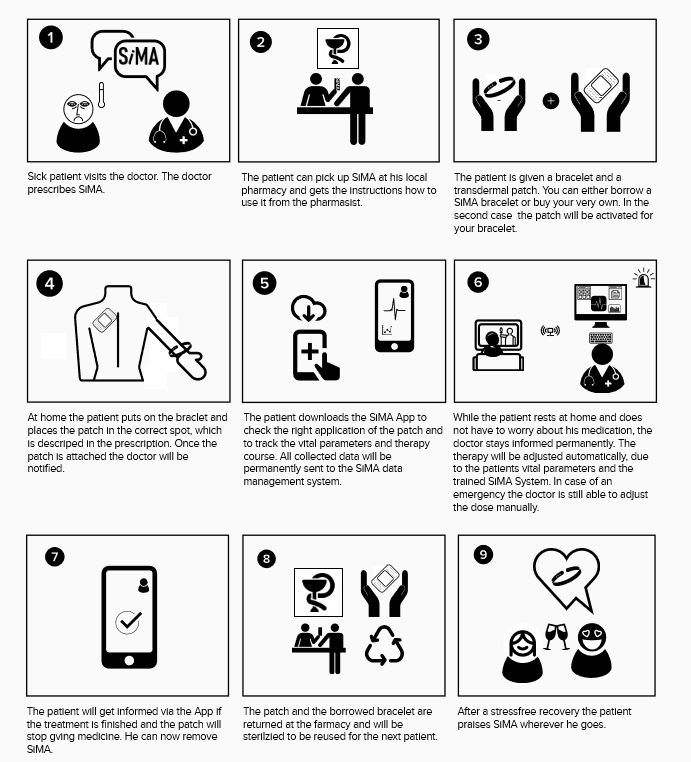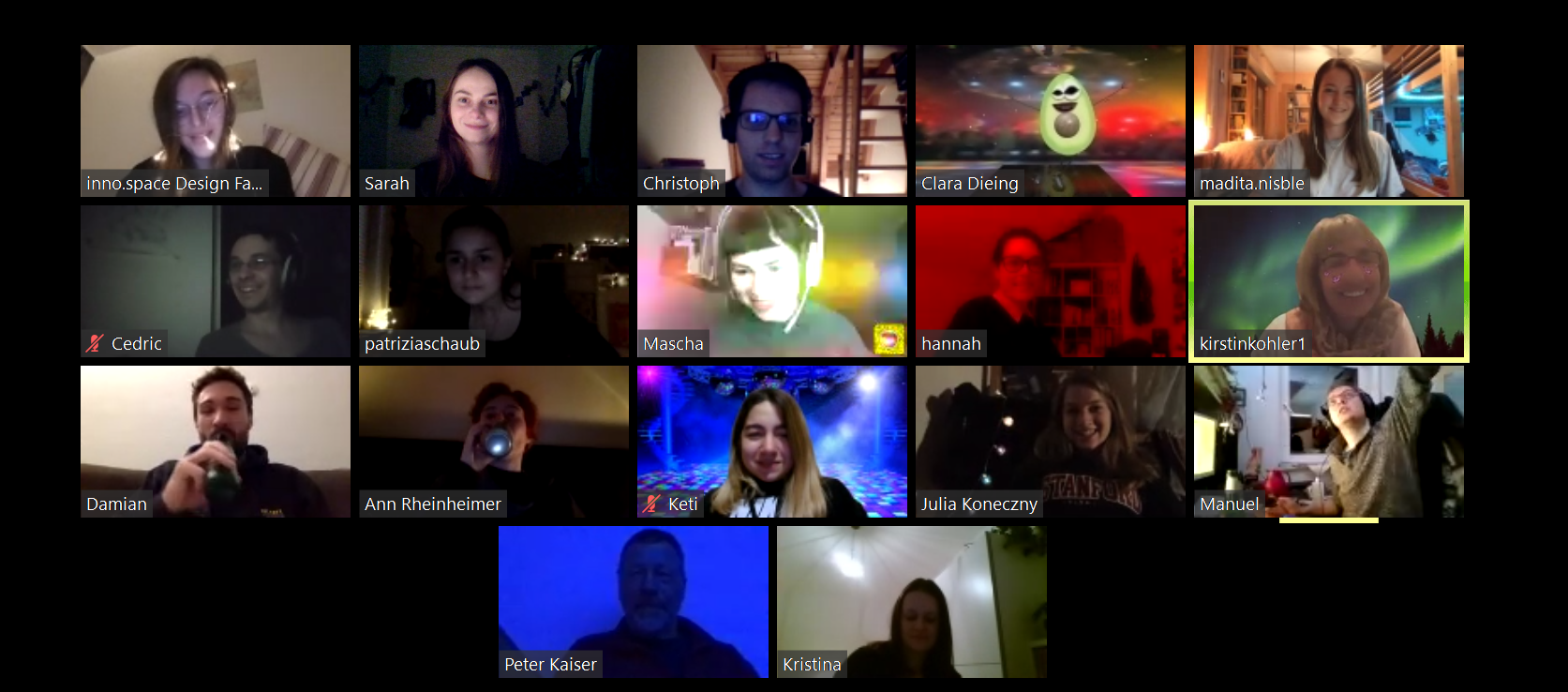“You’re on the final road with your concept” -Kirstin
- Talking to an optics experts to find out more about a possible non-invasive method to detect antibiotics in the blood
- Create a user story to get clear about the user touchpoints and the services we need to include
Expert interview
On wednesday we mananged to talk to another professor of our University, Prof. Beuermann, who is an expert in the fields of biomedical optics and fluorescence spectroscopy. We would like to thank Prof. Beuermann a lot for this time and the really helpful information we got. It really brought us a lot forward. Here the main things we found out during the interview with him:
- The only wavelngth that can go through the skin and reach the blood vessels is near infrared light (NIR), which spans from a wavelength 780 nm to 3 µm. However, the detection limit of fluorescence spectroscopy in the NIR area is quite hight, a few 100ppm. This means that everything under that concentration cannot be measured. Which means for us that it won’t be possible to use fluorescence spectroscopy in the way we have planned to detect the concentration of antibiotics in the blood, since they will reach not more the a few ppm.
- Fortunately, there are still other possible ways for us to detect the concentration of antibiotics. Some specific types of antibiotics, especially tetracyclines, are fluorescent itself, which means that they are light sensitive and therefore react if the get in contact with light. This phenomenon is called phototoxicity. Due to this, a skin reaction is forced and some side products arising therefrom are deposited in the skin. This side products are fluorescent and their inherent spectrum can be measured while exposing them to a characteristic light. Since it would no longer be necessary to light through the whole skin into the blood vessel and since signals of auto-fluorescence are way more intensive it is more likely that we will get a usable signal using this technique. Finally, one would then only have to calculate back from the concentration of the by-products to the actual concentration of the antibiotic. However, we would still get side-noise within our measurement since other substances in the skin and the blood like melanin and haemoglobin are fluorescent as well.
- In general, measuring substances in the blood from the outside using a non-invasive method is really difficult but also highly researched since it would open many new perspectives for medicine. However, those methods are still far away from being as effective or even more effective than minimally invasive measurement methods like prick one’s finger and get a color reaction.
As you can see, this part of SiMA is way more difficult to be realized than we tought. Nevertheless, we still think positve that there will be a way for us to achieve what we have planned. Just not the way we first thought it would be. The next step for this will be investigation the new topic in more detail and find out if this could really be a suitable solution for us. We even thought about whether it is acutally necessary to how the exact concentration in the blood or if there are other paramenters that can be measured more easily and will bring us the same result.
Because we had difficulty imagining the exact procedure for the patient, the teaching team encourages us to make a user story to make it clearer to us. We really enjoyed playing around with all the icons on Mural, which are a lot. But I won’t spend to much time explaining the user story, since I think it’s best if you just take a look at it yourself.


And as always: #stay home and stay safe 🙂


Dear Bees,
thanks for sharing all of that with this comprehensive blog post. It clearly indicates that things are not only more complicated and difficult than expected, but also that you are brave enough to dive deeper into technology and research and found promising solutions. Phototoxicity sounds amazing (Could it turn people into huge glowworms? I see new opportunities for light installations at parties). I also love the way you approached your film with the storyboard. It proofs your willingness to step outside your core discipline. This makes you to real design innovation heros and shows the brought rage of your talents!
I look forward to your final presentation, when all your work finally enters the stage!
(By accident I yesterday watched a TED talk from Reshma Saujani, “Brave, Not Perfect”. You made a huge step towards “very brave”.)
BTW: Who the hell is the christmas pickle 😉